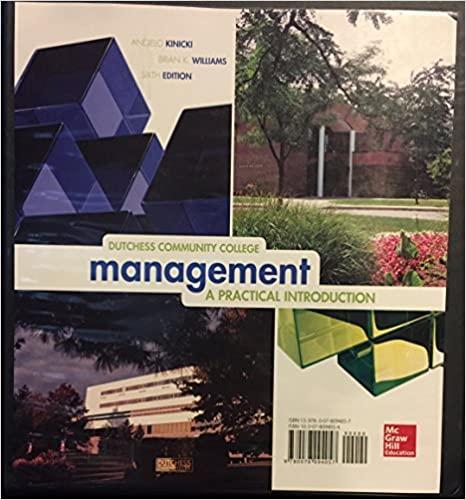Question
Explain how a conflict between your leadership style and the leadership style of another leader from the scenario would affect the achievement of the goals
Explain how a conflict between your leadership style and the leadership style of another leader from the scenario would affect the achievement of the goals of the HIM department merger.
Scenario
Organizational Goals
The organization's strategic goals include the following:
- Improve the patient experience.
- Measure productivity and report quality performance.
- Adapt to new payment-managed care models.
Based on the organization's strategic goals, the department goals include the following:
- Increase remote work with leadership support.
- Increase productivity standards for analysis, transcription, etc. (this depends on job roles and monthly productivity).
- Train all staff on the new EHR system.
Improve patient experience after the departmental merger. This includes release of information (ROI) turnaround time, coding accuracy (billing on time), deficiency reduction (billing on time), and patient portal satisfaction
| Emma Lane, RHIA South director | Background: Emma is a recent graduate, trying to learn the field and get acclimated to her job. She understands the transition and supports it because she is ready to meet new people and work with more experienced managers. Leadership Style: Emma leads with a very relaxed leadership style and allows employees the freedom to do their work without her overseeing their day-to-day operations. She allows a flexible schedule if employees work their hours and get work done. She is open to a flexible schedule or remote work where possible. She works remotely two to three days a week. Emma also tends to show favoritism toward certain employees within her department. |
| Kelly Vasquez, MHL, RHIA Downtown director | Background: Kelly recently moved from another state. She does not mind relocating and supports the change. She has experience with departmental and organizational mergers and thinks this is a great next step. Leadership Style: Kelly leads her employees using a laid-back style, and she trusts employees to do their work on time without constant guidance and supervision. However, she is always available to guide when needed. She prefers that employees resolve their work-related differences amongst themselves. |
| Marty Sanchez, RHIT Children's director | Background: Marty is an internal employee who has been with the department and worked his way up to his current position. The organization paid for his education. He intended to get his undergraduate degree and one day retire from the company, but now he is not so sure. He feels the company is not considering the employees in the move. He is also worried about working collaboratively with the other directors because he has the least amount of formal education. Leadership Style: Marty leads with an authoritarian leadership style and likes employees to stay on task and maintain a high level of productivity. Marty prefers that his employees to come to him if they have work-related disagreements. |
| Jenna Crumpton, RHIA, CCS North director | Background: Jenna has been with the company for over 15 years. She is not happy about the move to a centralized location due to the extended commute. She will have to travel over an hour to work. Leadership Style:Jenna is a very flexible manager, and due to her concerns with commuting and the need for flexibility is very open to flexible schedules for her employees and telecommuting. She will help resolve employee conflict if asked to intervene but otherwise lets employees resolve issues themselves. |
| Donna King, MBA, RHIT Long-Term Acute Care (LTAC) director | Background: Donna has been with the company for over 20 years. She is not happy about the move to a centralized location, and she does not want to learn the new technology. She fears her job will be eliminated. She is considering retirement. Leadership Style:Donna is a very hands-off manager and does not worry too much about employee productivity. She does not encourage change. She allows her employees to work at their own pace and can sometimes get involved in employee conflict, which creates more drama for the department. |
Step by Step Solution
There are 3 Steps involved in it
Step: 1

Get Instant Access to Expert-Tailored Solutions
See step-by-step solutions with expert insights and AI powered tools for academic success
Step: 2

Step: 3

Ace Your Homework with AI
Get the answers you need in no time with our AI-driven, step-by-step assistance
Get Started


